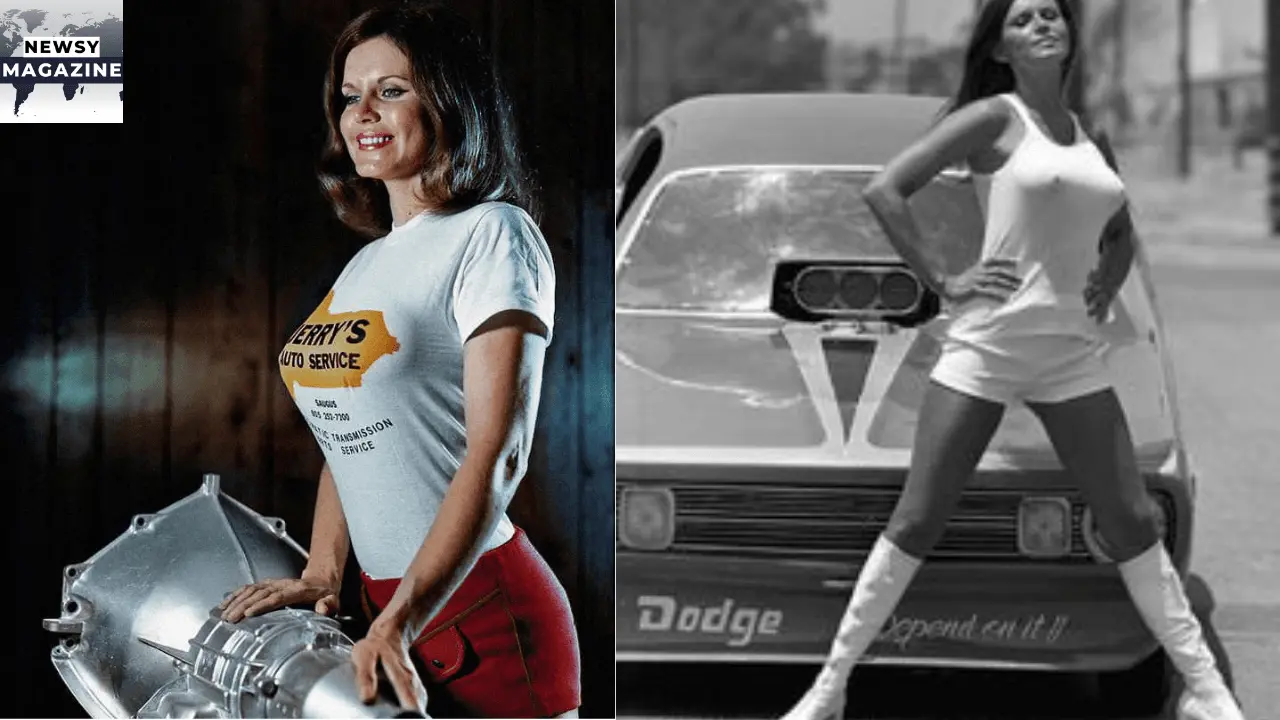
Barbara Roufs was a dazzling figure in the 1970s drag racing scene, known for her striking beauty and magnetic presence. She wasn’t just a trophy girl; she became a symbol of the sport’s glamour and excitement. Her journey from a California girl with a racing pedigree to the Professional Dragster Association (PDA) queen is a tale worth telling.
Imagine the roar of engines and the smell of burning rubber, with Barbara Roufs standing tall amidst the smoke and chaos, embodying the spirit of drag racing’s golden era. Her story is one of triumph, tragedy, and an enduring legacy that continues to inspire racing enthusiasts today.
Early Life and Background
Barbara Roufs was born in 1944 in California, where she grew up immersed in a culture of speed and competition. Her father, Wayne Eldon, was an avid motorcycle racer and a figure in the local racing community. Barbara’s upbringing in this environment naturally led her to develop a passion for racing. Her mother, Thelma Ruby Riley, owned a beauty salon and was a talented organist at the Church of the Nazarene, balancing a unique blend of glamour and down-to-earth family values that shaped Barbara’s character.
Growing up with three siblings, Barbara experienced a vibrant family life. Her brothers, James and Bruce, and her sister, Vivian, shared in the excitement and challenges of their father’s racing pursuits. These early experiences laid the foundation for Barbara’s future in drag racing, instilling in her a love for speed and a determination to make her mark.
Rise to Fame
Barbara’s entrance into the drag racing scene was nothing short of spectacular. At the age of 29, she distinguished herself from other trophy girls with her statuesque beauty, often donning long straightened hair and 60s gogo boots. Her presence at the tracks brought a new level of excitement and glamour to the races, capturing the hearts of fans and racers alike.
In 1973, Barbara was crowned the queen of the Professional Dragster Association (PDA), a title that solidified her status as a drag racing icon. Her role was not just about handing out trophies; she embodied the spirit of the sport, making appearances at major events and becoming a beloved figure in the racing community. Barbara’s charisma and charm were instrumental in drawing more attention to drag racing, helping to elevate the sport’s profile during its golden years.
Iconic Moments and Achievements

One of Barbara’s most memorable moments was her appearance at the 6th annual US Professional Dragster Championship at Orange County International Raceway. Her involvement in such high-profile events showcased her significance in the racing world. Barbara’s presence at these events was more than just symbolic; she was a key figure in promoting drag racing to a broader audience.
Barbara’s influence extended beyond the racetracks. Her image was often featured in magazines and promotional materials, making her a household name among racing enthusiasts. She became a symbol of the excitement and glamour associated with drag racing, a role model for many young women who admired her confidence and style.
Personal Life
Despite her public persona, Barbara’s personal life remained relatively private. She was married and had a daughter named Jet Dougherty. Jet later spoke fondly of her mother, describing Barbara as a vibrant and loving person who lived life to the fullest. Barbara’s family life was a testament to her ability to balance her public and private worlds, maintaining strong family ties while pursuing her passion for drag racing.
Barbara’s relationship with her parents and siblings played a significant role in her life. Her father’s influence as a racer and her mother’s grounding presence helped shape Barbara’s character. These familial bonds provided her with the support system she needed to navigate the challenges and triumphs of her career in drag racing.
Tragic Death
Barbara Roufs’ life came to a tragic end in January 1991 when she committed suicide under unclear circumstances. She was 47 years old at the time of her death. The news of her passing sent shockwaves through the drag racing community, leaving fans and fellow racers mourning the loss of an iconic figure. The reasons behind her decision remain a mystery, adding a layer of sadness to her otherwise glamorous legacy.
Barbara’s death marked the end of an era in drag racing. Her contributions to the sport and her impact on its culture were profound, making her passing a significant loss for the racing world. The tragic circumstances of her death have led to ongoing discussions about the pressures faced by public figures and the importance of mental health support.
Legacy
Barbara Roufs’ legacy lives on through the countless fans and racers who remember her fondly. Her influence on drag racing is still felt today, as she paved the way for future generations of women in the sport. Her story serves as a reminder of the importance of recognizing and celebrating the contributions of women in all fields, especially those traditionally dominated by men.
Barbara’s life and career continue to inspire new fans and participants in drag racing. Her story is a testament to the enduring power of passion and determination, showing that anyone can make a significant impact in their chosen field. Barbara’s legacy is a source of inspiration for those who seek to break barriers and pursue their dreams.
Remembering Barbara Roufs
Today, Barbara Roufs is remembered as more than just a trophy girl; she is celebrated as a pioneer in the world of drag racing. Her beauty, grace, and passion for the sport made her a beloved figure, and her tragic death only adds to the poignancy of her story. As we remember Barbara, we honor her contributions to drag racing and the lasting impression she left on the sport.
Fans and historians often reflect on Barbara’s impact on the culture of drag racing in commemorating her life. Her story is a reminder of the vibrant and dynamic history of the sport, highlighting the individuals who have shaped its evolution over the years. Barbara Roufs remains a key figure in this narrative, her legacy inspiring and captivating new generations of racing enthusiasts.
Conclusion
Barbara Roufs’ story is one of triumph and tragedy, a tale of a woman who left an indelible mark on the world of drag racing. Her life and career remind us of the importance of celebrating those who contribute to the richness of our cultural and sporting heritage. As we look back on her legacy, we are reminded of the power of passion and the enduring impact of those who dare to stand out in a crowd.
Barbara’s influence on drag racing is a testament to her unique blend of beauty, charisma, and determination. Her story continues to resonate with fans and participants in the sport, serving as a source of inspiration and a reminder of the vibrant history of drag racing. Through her contributions and the legacy she left behind, Barbara Roufs remains an iconic figure in the annals of racing history.
See Also: Who Is Sophie Brussaux?
FAQs
Q: Who was Barbara Roufs?
Barbara Roufs was a prominent figure in the 1970s drag racing scene, celebrated for her beauty and charisma as the queen of the Professional Dragster Association.
Q: How did Barbara Roufs become famous in drag racing?
Barbara Roufs gained fame as a trophy girl in the drag racing world, becoming the queen of the Professional Dragster Association in 1973.
Q: What were Barbara Roufs’ major contributions to drag racing?
Barbara brought glamour and excitement to drag racing, drawing attention to the sport and becoming an iconic figure through her appearances at major events and in promotional materials.
Q: What led to Barbara Roufs’ tragic death?
Barbara Roufs tragically committed suicide in January 1991 under unclear circumstances, which left the drag racing community in shock.
Q: What is Barbara Roufs’ legacy in the drag racing world?
Barbara’s legacy lives on through her impact on the sport, inspiring future generations of women in drag racing and being remembered as a trailblazer in a male-dominated field.






